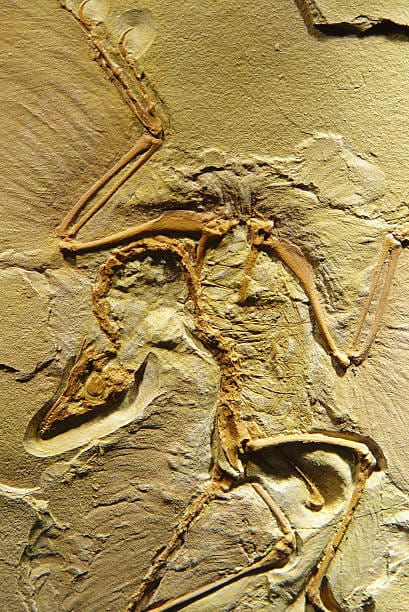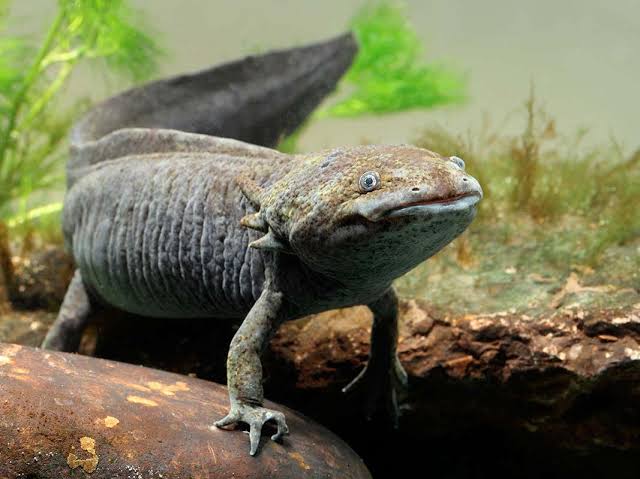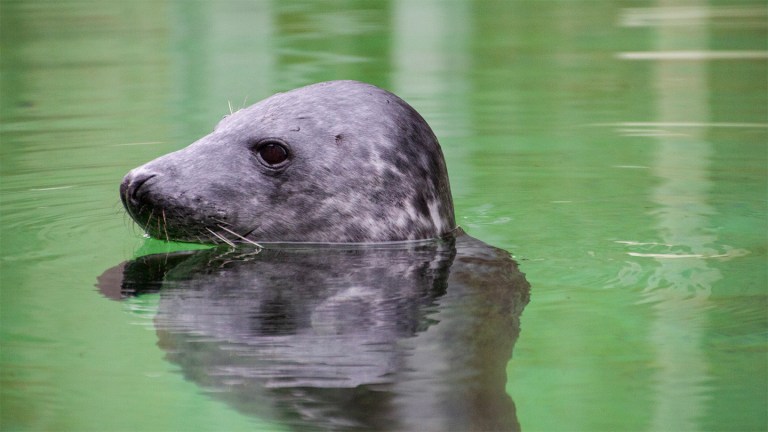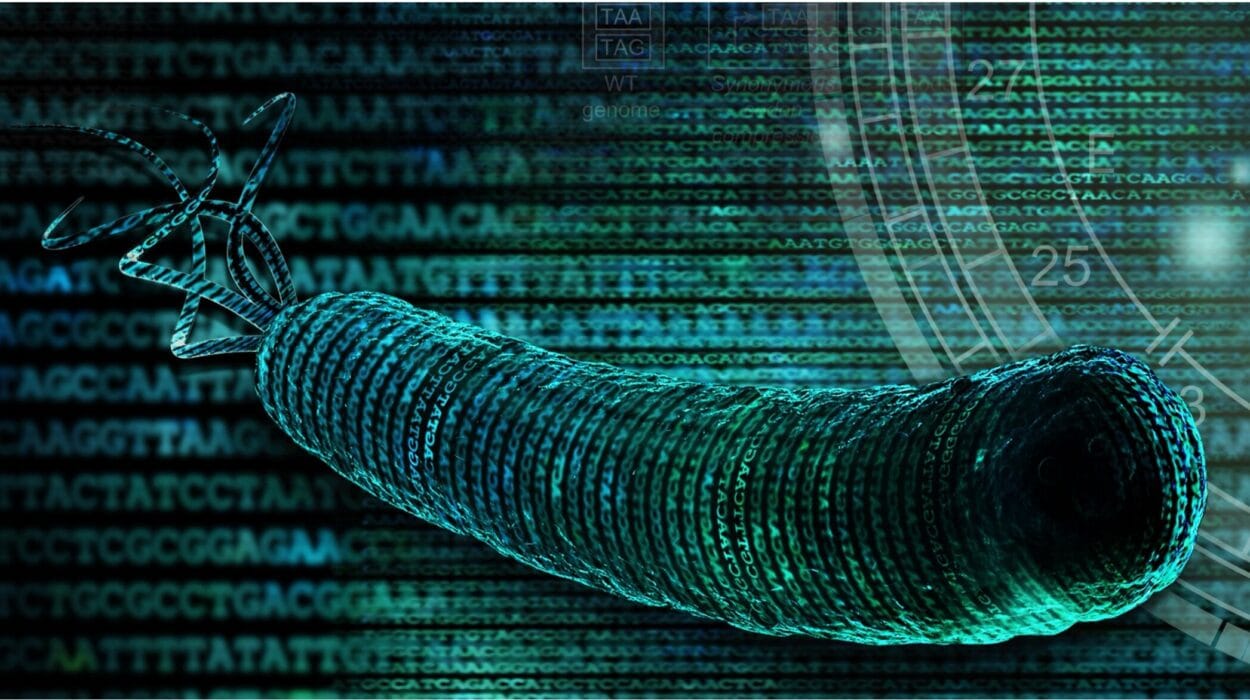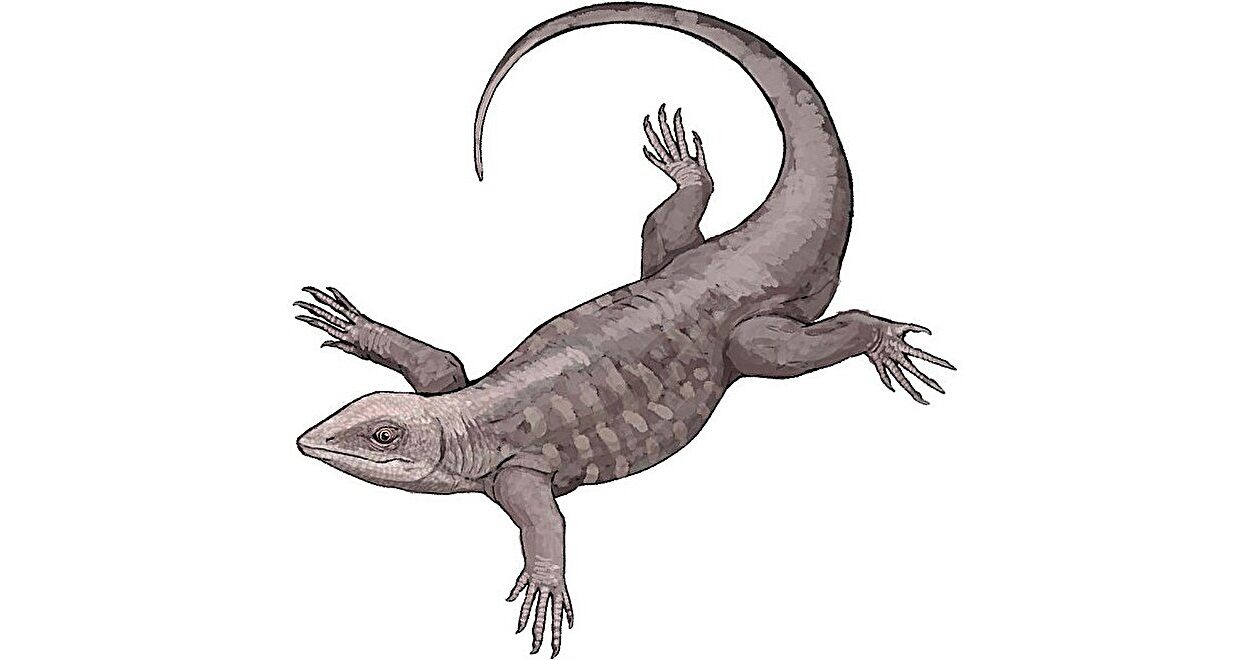In the dusty corners of ancient stone, where time itself has folded into silence, lie fragments of a story so breathtaking it reshaped how we view life on Earth. A story of transformation, survival, and reinvention—a story told not in words, but in bones.
For centuries, birds were seen as creatures apart. Their feathers, songs, and flight gave them an aura of lightness, almost otherworldliness. But hidden in the rocks, buried beneath millions of years of sediment, lay secrets that would forever shatter that illusion. Birds, it turns out, are not distant from the prehistoric beasts that once thundered across the Mesozoic Earth. They are them—changed, evolved, and still soaring.
The fossil record has become a bridge across time, linking the ferocious world of dinosaurs to the delicate flutter of a sparrow’s wing. Through extraordinary discoveries and scientific rigor, paleontology has unearthed the astonishing truth: birds are living dinosaurs.
This revelation did not come all at once. It emerged, as many great truths do, through the slow accumulation of evidence—each fossil a page in a book we’re still learning to read.
The Early Clues: When Feathers First Flew
The journey to understanding bird origins began in earnest in 1861 with a fossil found in a limestone quarry in Solnhofen, Germany. Preserved in remarkable detail, it was unlike anything scientists had seen. It had the feathers of a bird—but the teeth, clawed fingers, and bony tail of a reptile. This was Archaeopteryx lithographica, and it would become the most famous fossil in the history of paleontology.
To the eye of 19th-century science, Archaeopteryx was a confusing chimera. Some saw it as a bird. Others as a reptile. Charles Darwin, just two years after publishing On the Origin of Species, recognized its significance immediately. It was, he believed, the perfect transitional form.
But it would take more than a century for the field to catch up to Darwin’s intuition. Throughout the early 20th century, the dominant belief was that birds had evolved from some unknown group of early reptiles. Dinosaurs, by contrast, were thought of as cold-blooded, sluggish beasts—a far cry from the agile world of birds.
It wasn’t until the second half of the 20th century that this perception began to crack. A new wave of discoveries, particularly in China, started turning everything on its head.
The Dinosaur Renaissance: A Shift in Scientific Vision
In the 1960s and 1970s, paleontologist John H. Ostrom of Yale University re-examined a little-known dinosaur called Deinonychus. With its sickle-shaped claws, lightweight build, and bird-like anatomy, Deinonychus was a revelation. It wasn’t slow or lumbering—it was agile, fast, and perhaps warm-blooded.
Ostrom proposed that birds evolved not from some obscure ancestor but from theropod dinosaurs—the same lineage that includes Tyrannosaurus rex and Velociraptor. This bold idea, known as the “dinosaur-bird hypothesis,” was met with skepticism. Many scientists weren’t ready to accept that the scaly titans of the Mesozoic had given rise to robins and wrens.
But evidence kept piling up.
Comparative anatomy revealed deep similarities between theropod dinosaurs and birds. Both had hollow bones, three-fingered hands, similar eggshell structures, and a wishbone (furcula). Their hips, shoulders, and even respiratory systems bore striking resemblances. As more fossils came to light, the dividing line between bird and dinosaur blurred almost to invisibility.
Still, what scientists lacked was direct proof—an undeniable link that showed feathers emerging in non-avian dinosaurs.
Then, in the 1990s, the rocks of China began to speak.
China’s Fossil Treasure Trove: Feathered Dinosaurs of Liaoning
In the Liaoning Province of northeastern China, an extraordinary fossil bed was discovered in the Yixian Formation. This region, dating to about 125 million years ago, had once been a volcanic lakebed. Its fine silt and rapid burial conditions preserved not just bones, but soft tissues—feathers, skin, even internal organs.
And what emerged from those rocks changed everything.
In 1996, the world was introduced to Sinosauropteryx, a small theropod dinosaur covered in what appeared to be primitive, fuzzy filaments—proto-feathers. This was the smoking gun. Feathers had not originated with birds, but with their dinosaurian ancestors.
Soon after came Caudipteryx, with symmetrical, pennaceous feathers on its arms and tail. Then Microraptor, a crow-sized dinosaur with long feathers not just on its arms, but on its legs as well—suggesting a four-winged form of gliding or flight. Anchiornis, Sinornithosaurus, Beipiaosaurus—the list grew longer each year.
These fossils revealed that feathers were not a sudden invention of flight. They evolved gradually, likely for insulation, display, or even camouflage, before being co-opted for aerodynamic purposes. Feathers, it turned out, were an ancient, versatile adaptation.
Even more astonishing were the revelations of feather coloration. Using scanning electron microscopy, scientists identified pigment-containing structures in some Liaoning fossils, allowing them to reconstruct their original colors. We now know that Anchiornis, for instance, sported black-and-white striped wings and a rusty red crest—like a prehistoric woodpecker.
These discoveries not only strengthened the bird-dinosaur link—they transformed it into scientific fact.
Flight: A Gradual Ascent, Not a Sudden Leap
The origin of flight is one of the most captivating puzzles in evolutionary biology. Did birds evolve from tree-dwelling dinosaurs that glided down from branches, or from ground-running ones that flapped their arms while leaping after prey?
This debate—dubbed “trees down” versus “ground up”—has fueled scientific discussion for decades.
What the fossils suggest is a more nuanced picture. Many of the feathered dinosaurs discovered in Liaoning show adaptations for both running and gliding. Microraptor may have leapt from trees, controlling its descent with all four limbs. Others like Velociraptor had quill knobs—anchor points for flight feathers—even though they were clearly terrestrial.
Flight didn’t appear in a single leap. It was a slow, experimental process. Feathers became longer and more complex. Limbs became lighter. Muscles grew stronger. Air sacs evolved to support the high metabolism required for powered flight.
Eventually, one lineage of small, feathered theropods—possibly close to Archaeopteryx—crossed the threshold. They weren’t just gliding anymore. They were flapping, generating lift, and flying.
The True Birds Emerge: From Archaeopteryx to Avialae
As our understanding of early bird evolution grew, scientists reclassified Archaeopteryx not as a singular missing link, but as one member of a broader group called Avialae—the earliest true birds and their close relatives.
Archaeopteryx still retained many dinosaur-like traits, but newer fossils revealed birds gradually losing their long tails, teeth, and clawed fingers while developing keeled breastbones, shorter torsos, and beaks. The transition from dinosaur to bird was not abrupt—it was a mosaic of changes across millions of years.
By the time we reach the Late Cretaceous, about 80 million years ago, birds like Ichthyornis and Hesperornis were widespread. Ichthyornis could fly powerfully and had a beak with teeth. Hesperornis was flightless but adapted for swimming, like a prehistoric penguin.
Birds were diversifying in tandem with their dinosaurian cousins. But then came the asteroid.
The Great Extinction and the Birds Who Survived
Sixty-six million years ago, a six-mile-wide asteroid slammed into what is now the Yucatán Peninsula in Mexico. The impact unleashed firestorms, acid rain, and a global winter. Within a few years, nearly 75% of all species on Earth were gone—including every non-avian dinosaur.
But some birds survived.
How? It’s still a subject of intense study, but the survivors likely shared key traits. They were small, ground-dwelling, and had generalist diets. Seed-eating may have helped them endure the post-impact famine. From these hardy survivors, all modern birds—more than 10,000 species—descend.
The line between dinosaur and bird wasn’t drawn at extinction. It had already vanished.
Birds Today: Living Fossils with Ancient Roots
Every time you hear a robin sing or watch a hawk soar, you’re witnessing the continuation of a story that began over 150 million years ago. Birds carry within their bodies the echoes of the dinosaurs they came from.
Their wings are modified forelimbs. Their feathers are scaled-up scales. Their wishbones once braced the arms of predators. Even their eggshells and nesting behavior harken back to their raptor ancestors.
Modern technologies, including CT scanning, isotopic analysis, and genetic studies, have deepened our understanding of these connections. We now know that birds share not just bones with dinosaurs—but behaviors too. Fossilized nests, eggs, and even embryos show that many dinosaurs brooded their young like birds. Some even had air sacs and vocal structures resembling those of modern birds.
The past, it seems, lives on not just in stone, but in song.
The Ongoing Hunt: New Fossils, New Questions
Despite how far we’ve come, the story is far from complete. New fossils continue to emerge, each one adding nuance to the narrative.
In Mongolia, exquisitely preserved oviraptorid dinosaurs have been found sitting atop nests, wings outstretched in a protective posture. In South America, long-legged early birds like Patagopteryx offer clues about how birds adapted to terrestrial life. In Madagascar, bizarre flightless birds like Rahonavis hint at parallel experiments in flight and loss thereof.
And the tools for studying these fossils keep improving. Synchrotron imaging, electron microscopes, and chemical analysis now allow paleontologists to examine bone growth, feather proteins, and even traces of ancient DNA.
Each breakthrough brings new questions. Were feathers first for warmth or courtship? How many times did flight evolve—or get lost? Which dinosaurs sang before they flew?
The answers lie waiting—in stone, in the Earth, and in the sky.
Conclusion: Wings Born of Time
The fossils that reveal the origin of birds are more than relics. They are fragments of deep time, whispers of an ancient world that still pulses in the flutter of a sparrow or the silent glide of an owl.
They remind us that evolution is not a ladder, but a branching tree. That the past lives within us. That flight—perhaps the most poetic power of all—was not born from fantasy, but from slow, steady change, written in bone and feather.
Dinosaurs are not gone. They are all around us, chirping in the trees, diving through oceans, soaring across continents.
And thanks to the fossils, we can finally see them for what they are.
